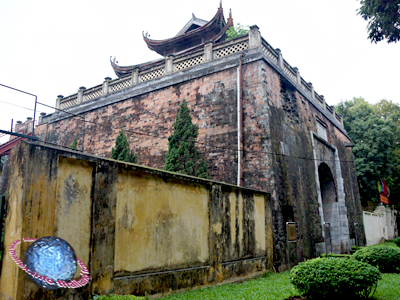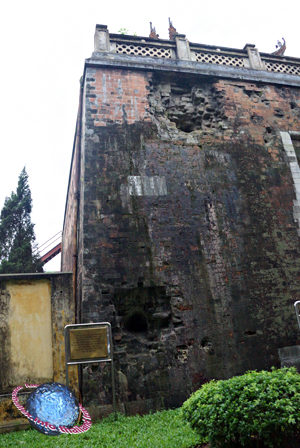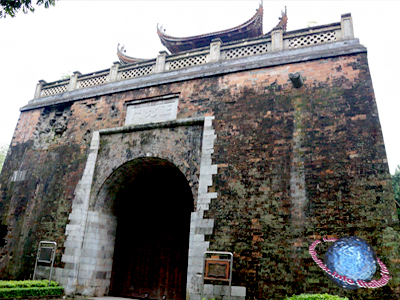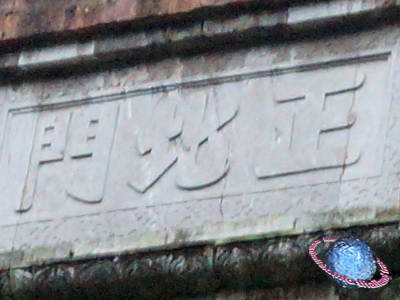|
|
 |
|
Hanoi Citadel (North Gate) |
|
|
 |
|
The North Gate
of the Citadel of Hanoi was built in 1805, and today is
the only remaining gate to the Hanoi Citadel, which
itself was built during the Ly Dynasty and dates from
1010 AD. |
|
The citadel was
the seat of the Vietnamese court until 1810, when Hue
became the capital city (fig.).
Under General Giap, the North Vietnamese military
command had its HQ in the citadel, which was by then
largely destroyed by the colonial French. The watch
tower still bears the scars of cannons fired from French
battleships in 1882. |
|
 |
|
Hanoi Citadel (North Gate) |
|
 |
|
Hanoi Citadel (North Gate) |
|
|
The gate,
which is topped with a
tetrahedron
watch tower, was built in
brick, with rectangular edges and an arched doorway. It
has two heavy wooden doors, that run on copper wheels
and that measure 12m² each, whilst their combined
weight is about 16 tons. |
|
Above the archway
is a stone slab in traditional Chinese script that reads,
from right to left: zheng bei men (正北門), which means
‘Main
North Gate’,
the literal translation of which is used for the
Vietnamese name, i.e. Chính Bắc Môn.




 |
|
 |
|
Hanoi Citadel (North Gate) |
|





|
|